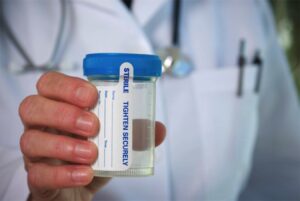National Institute on Drug Abuse (NIDA) statistics show that nearly 68 percent of adults who use illegal drugs hold full or part-time jobs, and NIDA research indicated the same is true of those who abuse alcohol. These employees, when compared to those who do not use drugs or drink heavily, tend to be tardy or call out regularly, and move from job to job more often. They're also more commonly linked to workplace accidents and injuries, and are more likely to file a claim for workers' compensation.
Employers that have adopted drug-free policies, which may include employee drug testing of some kind, have seen a boost in worker enthusiasm and efficiency while also reporting fewer accidents and instances of tardiness and absenteeism. To create a positive and safe environment, companies might consider being proactive on several fronts to increase the likelihood of hiring and keeping the best employees possible.
Be selective in hiring

Once you narrow it down to those with the skills and experience needed for the position there are several more measures you can take to find employees who recognize the importance of a drug and alcohol-free workplace. Conducting a criminal background check is one way to learn whether an applicant has had legal troubles involving substance abuse in the past. Pre-employment drug screening is another option for companies committed to a safer workplace because doing so can indicate whether an individual has used drugs in the recent past.
Get to know your employees

The American Management Association reports recent findings showing that when workers feel that their employers genuinely care about them, they are happier, more productive and have greater respect for the company. Take the time to learn about the hobbies and interests of the workers you oversee. Perhaps someone who enjoys cooking would appreciate talking about a favorite family dish, or maybe one of your workers is also an accomplished artist. This helps built trust so that an employee may be more likely to come to a manager with a problem concerning themselves or a co-worker, which is especially important if drugs or alcohol are involved.
Create a positive work environment

Giving employees an upbeat work environment can involve anything from organizing an annual company picnic to rewarding great performance with a gift card to a local restaurant or tickets to a sporting event. If an employee makes a mistake, offer constructive feedback and help them create a plan to improve performance in the future.
Know the signs

Even companies that have implemented some kind of drug-free policy may still encounter a worker struggling with drugs or alcohol, and it is important to recognize signs of a potential problem. The National Council on Alcoholism and Drug Dependence lists several red flags that could point to substance abuse including worsening appearance, unexplained accidents or injuries, sudden weight fluctuations, visible trembling, mood swings and an inability to focus.
Offer educational resources

More employers are incorporating substance abuse education as one component of a broader ongoing health and wellness initiative, according to SAMHSA. Hold luncheons and meetings about health-related topics, including the impacts of substance abuse on the workplace, and educate new hires about the drug and alcohol-free policies in place during orientation.
Conduct random drug testing

For a truly drug-free workplace, some employers conduct random drug testing. According to the Department of Labor, workers are selected for testing from a pool by identifying personal information like a social security number. Other kinds of testing come with some advance notice, making it easier for an employee to cease drug use for a period and achieve a negative test result. Because of this, random testing acts as a greater barrier to those who might consider violating the company's substance abuse policies.
According to the United States Bureau of Labor Statistics, the number of unemployed Americans stood at 8.7 million at the end of 2014. That means most employers attract a wider pool of potential hires from which to choose, and that companies can afford to take a little extra time to find and retain employees who value a workplace free of the risks linked to substance abuse.
